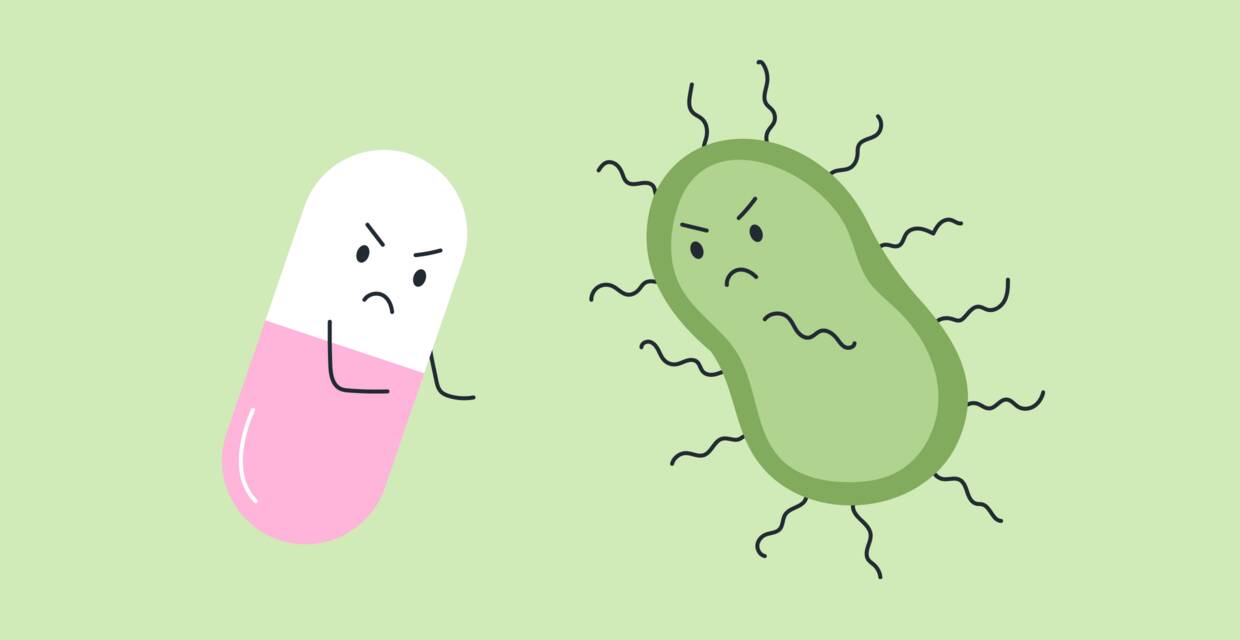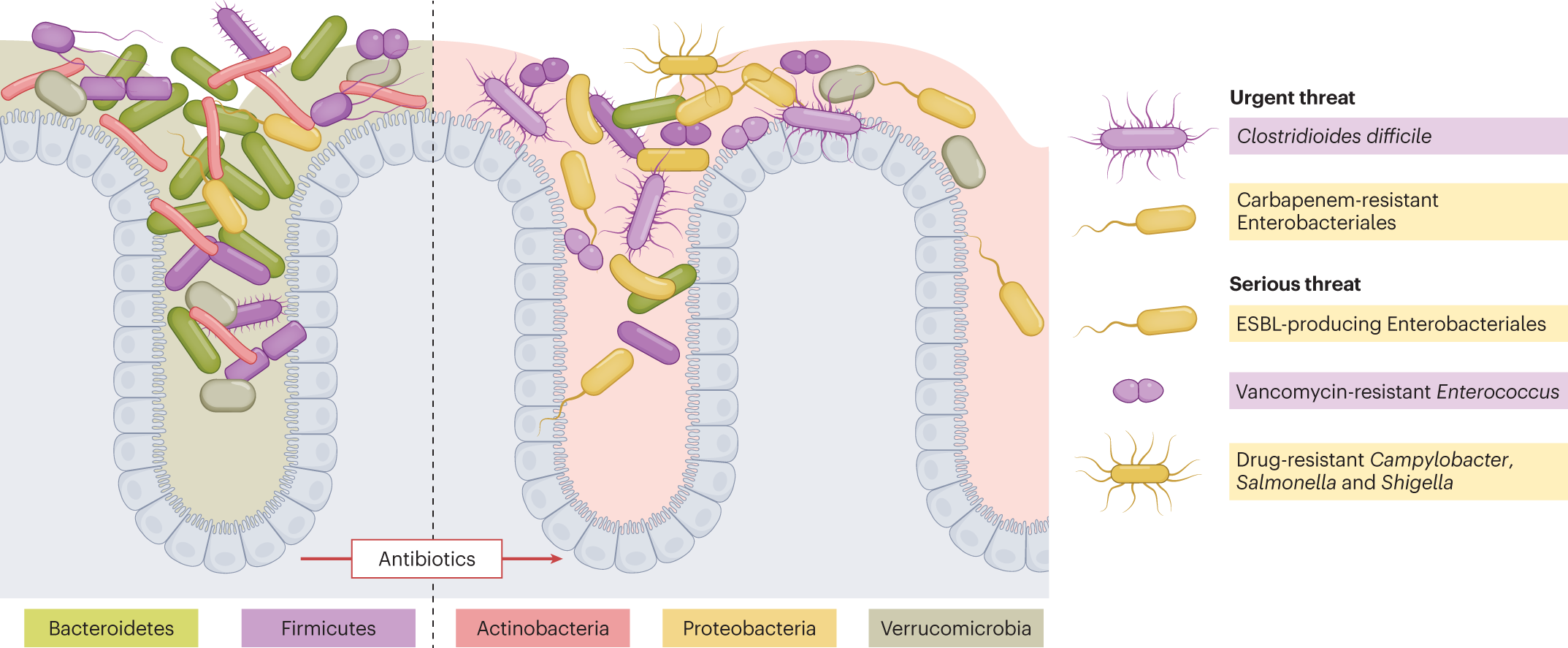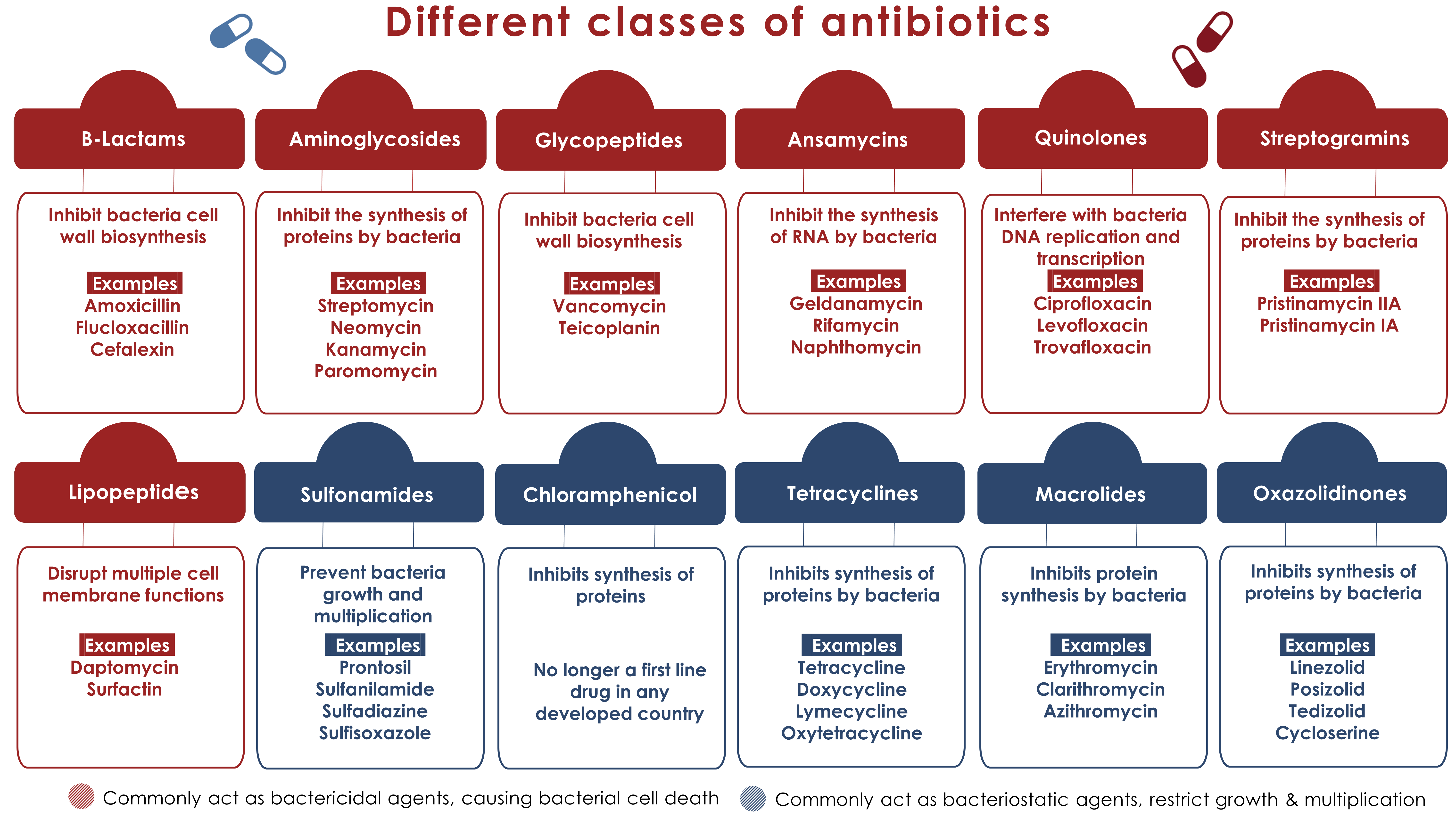
Key facts
- Antibiotics are medicines that treat infections and diseases caused by bacteria.
- Different types of antibiotics work in different ways, but all antibiotics damage bacteria so that your immune system can more easily fight the bacteria.
- Doctors prescribe antibiotics that are best suited to the type of infection you have.
- Like all medicines, antibiotics can cause side effects. Some people are allergic to certain antibiotics.
- Because antibiotics have been overused, many are no longer effective. Antibiotics should only be used if they are needed to treat a bacterial infection.
What are antibiotics?
Antibiotics are medicines that treat infections and diseases caused by bacteria. Antibiotics do not work against viruses. Penicillin is a well-known antibiotic.
Antibiotics are part of a larger group of medicines called antimicrobials. Other types of antimicrobials are:
- antivirals — for treating infections caused by viruses
- antifungals — for treating infections caused by fungi
- antiparasitics — for treating infections with worms and parasites
These medicines are all used to treat infections.
Because antibiotics have been overused, many are no longer effective. Antibiotics should only be used if they are needed to treat a bacterial infection.
How do antibiotics work?
Different types of antibiotics work in different ways. However, all antibiotics damage bacteria so that your immune system can more easily fight the bacteria.
Why are there different types of antibiotics?
Different antibiotics work against different types of bacteria:
- broad spectrum antibiotics work against a wide range of bacteria
- narrow spectrum antibiotics only work against a few types of bacteria
Your doctor will choose an antibiotic that is best suited to your infection.
How do doctors know which antibiotics to use?
Sometimes, doctors choose an antibiotic based on what they think will work.
At other times, your doctor will recommend tests to work out which bacteria are causing your infection. This information helps them to choose the antibiotics that are likely to be most effective.
What are the side effects of antibiotics?
Like all medicines, antibiotics can cause side effects.
Some common side effects include:
- diarrhoea
- nausea and vomiting
- thrush infections, in your mouth or vagina
Less common side effects are:
- ongoing diarrhoea
- allergic reactions
What happens if I’m allergic to antibiotics?
If you are allergic to antibiotics, you may get signs and symptoms. These might include a rash, swelling of the face or difficulty breathing.
While any antibiotic could cause an allergy, most allergies are caused by:
- penicillin or antibiotics closely related to penicillin
- antibiotics called sulfonamides
If you are allergic to one antibiotic, you are likely to be allergic to all other antibiotics in that class.
A severe allergy may result in anaphylaxis and usually occurs within an hour of taking an antibiotic. This is a medical emergency and needs immediate medical attention.
Feeling nauseous and vomiting after taking antibiotics are common side-effects. These are not usually an allergic reaction.
If you have any other concerns about antibiotics, including possible side effects, talk to your doctor or pharmacist.
How do I take antibiotics?
Like all medicines, when taking antibiotics you should follow the instructions that your doctor gives you.
You might want to ask your doctor if there are any medicines you should not take with your antibiotic. This information can also be found in the Consumer Medicine Information (CMI) that comes with your medicine.
Most antibiotics are given by mouth, either as a liquid or a tablet. Some antibiotics can be applied directly to the eyes as eye drops or ointment.
If you are in hospital, you might be given antibiotics through a drip (intravenously). Your doctor will choose the best way for you to receive your medicine.
What should I do if I cannot get my antibiotics?
Currently, there is a shortage of some antibiotics in Australia, such as amoxicillin, cefalexin and metronidazole.
If you cannot get the medication that you need, speak to your pharmacist or doctor. They can advise on alternatives. For more information, visit Therapeutic Goods Administration (TGA).
What is antibiotic resistance?
Many antibiotics are less effective than they once were. This is due to antibiotic resistance. This has been caused by antibiotics being used so often that they no longer work against the bacteria. Sometimes the bacteria change to protect themselves against the antibiotic. Antibiotic resistance is a serious global problem.
The more bacteria are exposed to antibiotics, the more chances they have to change and become resistant. This can happen by:
- using antibiotics when they’re not needed
- not taking antibiotics properly — such as missing doses or not completing the course
How does antibiotic resistance affect me?
Using antibiotics when you don’t need them may stop them from working when you do need them.
If an antibiotic no longer works against the resistant bacteria:
- infections take longer to heal
- infections can get worse and lead to more serious problems
- you might be sick for longer and pass your infection on to other people
How can I prevent antibiotic resistance?
Antibiotic resistance can’t be totally stopped, but you can help slow it down by sensibly using antibiotics. Australia has one of the highest rates of antibiotic use in the world. You can help slow down antibiotic resistance by:
- not taking antibiotics when you have a cold or the flu
- taking your antibiotics as prescribed
- having good hygiene practices to avoid spreading infections
Viruses cause most colds, flu and COVID-19. Antibiotics don’t work against viruses.
Taking your antibiotics as prescribed involves:
- taking the right dose at the right time
- taking the antibiotics for as long as your doctor tells you
- never saving antibiotics for the next time you’re sick
- never taking antibiotics prescribed for someone else
Good hygiene practices help to stop you from getting sick. They also stop you spreading infections to other people.
How are infections with antibiotic resistant bacteria treated?
It is sometimes possible to use another antibiotic to which bacteria aren’t resistant. However, it may not work as well, and it could also cause side effects. It’s also possible that the bacteria may become resistant to this antibiotic too.
For these reasons, antibiotic resistance is a major threat to human health. There is concern that there’ll be bacterial infections that just can’t be treated.
What are ‘superbugs’?
‘Suberbugs’ is a term used for bacteria that are resistant to antibiotics. Superbugs such as Methicillin-resistant Staphylococcus aureus (MRSA) and multi-drug-resistant strains of Escherichia coli (E. coli) are common. They can be a problem in hospitals.
Why did I get antibiotics when I had surgery?
Sometimes antibiotics are prescribed to stop infections happening. This might happen when you have surgery or a dental procedure.
In Australia, doctors and nurses are working together to review this practice. By reducing the use of antibiotics, they will help reduce antibiotic resistance.





